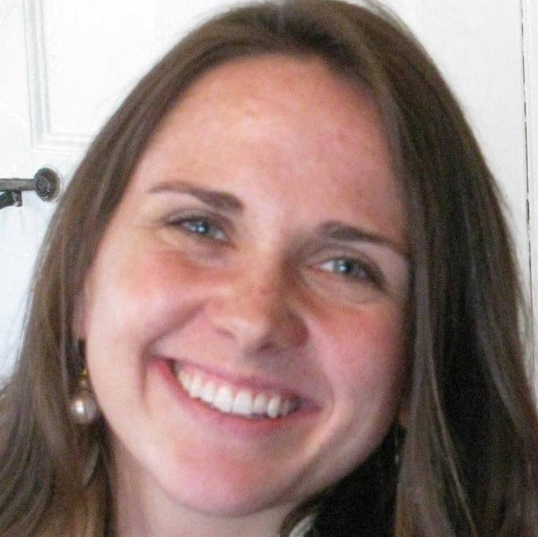Watch Out 2016! Are You Ready for Healthy Food in Health Care?
Over this past year, the Healthy Food in Health Care network of leadership hospitals, clinician champions, and fierce food service directors charged forward, leading the food system towards resiliency and our nation's communities towards health. Transitions were ubiquitous as hospitals increased their purchase of meat raised with responsible antibiotics, federal policy opened opportunities for nonprofit hospitals to widen their reach into prevention-based health care, and the HFHC Program staff adjusted for the growth to come.
Perhaps the biggest change for our hospital partners, we said goodbye to the Healthier Hospitals Initiative, and hello to the Healthier Hospitals (HH) program. Building on the momentum and success of the Healthier Hospitals Initiative, HH has become a permanent program of Practice Greenhealth, intended to guide those who are just beginning their sustainability work. The six Challenge areas, corresponding data sets and How-to Guides have been reviewed and refreshed and will continue to benchmark progress towards HCWH’s Less Meat, Better Meat and Local and Sustainable Food Procurement goals. Members of PGH can look forward to new food service tools and guidance including support for increasing tap water promotions, supporting local farms, and managing waste, energy, and water in your food service operations.
Beyond hospital walls, the HFHC program continues to activate the health care sector to embrace their role as anchors in their community. As a result of changes to the federal community benefit reporting structure, non-profit hospitals across the United States are finding new support for innovative community and public health strategies that incorporate environmental and community health factors. Leveraging the expertise of our network, HFHC’s Catalyzing Health Care Investment in Healthier Food Systems project has launched into its first year of research to identify innovations, tease out evidence-based indicators, and build a national learning network to increase the use of federal community benefit funds to increase access to healthy, locally-sourced, and sustainably-produced foods for their community.
Public health entities and health professionals aligned calling out antibiotic resistance as the most pressing public health threat of our time. The HFHC network was primed to act. As members of the newly formed Clinician Champions in Comprehensive Antibiotic Stewardship (CCCAS) Collaborative, over 50 physicians, dietitians, nurses, pharmacists, veterinarians joined forces as a strong coordinated clinical voice taking action on the misuse of antibiotics in agriculture. Through a successful Get SMART activity in November of 2016, clinicians from 14 different states pledged to urge the leadership of 27 different hospitals to develop a resolution to phase out the institutional purchase of meat raised without routine antibiotics.
Stepping up to the plate, the Massachusetts Hospital Association launched an Antibiotic Stewardship Initiative urging their member facilities to transition one regularly purchased meat item to a source raised with responsible use of antibiotics and to start an important dialogue with their suppliers. October brought Food Day, which activated over 300 health care facilities to purchase nearly twice the amount of meat raised without routine antibiotics than on Food Day the previous year amounting to 235,000 meals to staff, visitors, and patients this day alone.
Recognizing the potential for collective impact HCWH joined alongside Real Food Challenge (RFC), Center for Good Food Procurement (CGFP) and School Food FOCUS launching the Ed-Med Collaborative. Hospitals and schools together provide an opportunity to combine the market power of large-scale purchasing with the concerns of consumers. A single hospital can have an annual food budget of $200,000 to $8 million or more, while many larger school districts can spend between $6 to $92 million on food each year. Together the Collaborative also discussed how to leverage another form of currency – the moral authority of public institutions dedicated to the health and well-being of children and the public.
To seize the momentum built in 2015 and launch into 2016 some HFHC team members have taken on new roles. This includes my transition to serve as National Program Director for this dynamic team. In addition, we have added several new positions. We welcome, Susan Bridle-Fitzpatrick and Marydale Debor to lead our Catalyzing Health Care Investment in Healthier Food Systems project. See our team roster for a full list of changes and new staff. We continue to partner with organizations and individuals in key regions to bring the HFHC work to the ground in 5 core regions. We have begun the process of assessing geographic placement and partners to expand our boots on the ground in the Southwest, Southeast and the Midwest.
With our Environmental Nutrition framework rolled out and our Better Meat strategy hitting benchmarks, we will launch the Less Meat component of our strategy to transform meat production in the US. The National Ed-Med Collaboration will build on the knowledge and momentum created this past year to increase and aggregate institutional foodservice demand for sustainable foods in the marketplace while increasing regional, sustainable production.
This is an exciting year of progress and growth for Healthy Food in Health Care. The year is looking shiny, in a non-toxic, BPA-free sort of way. So jump on board with HFHC. You are in for a ride!
 Stacia Clinton, RD. LDN is the National Program Director of Health Care Without Harm's Healthy Food in Health Care program.
Stacia Clinton, RD. LDN is the National Program Director of Health Care Without Harm's Healthy Food in Health Care program.
